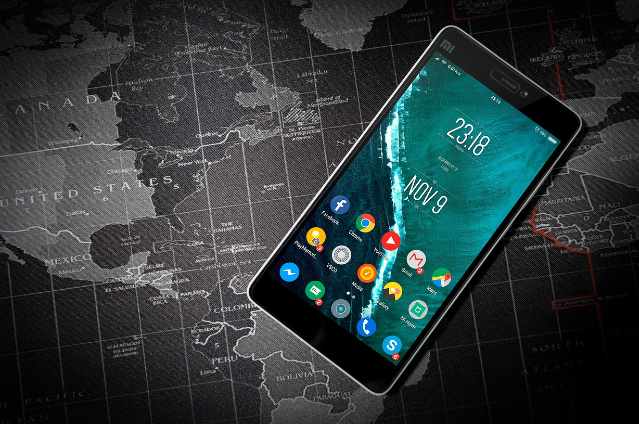
The concept of being disconnected can be considered radical in a generation in which we are connected to the point of work emails, weekend entertainment, and everything in between—all by a single tap. However, an increasing number of people report feeling burned out, overstimulated, and emotionally exhausted due to their continuous digital ubiquity. Here comes the awakening of the digital detox: a willful departure from screens, social media, and other binges of the digital realm.
But what is it that a digital detox can do for us, and why is it becoming known as the new form of self-care? Let’s get to the nitty-gritty of the psychological, emotional, and physical effects of being bombarded by our screens—and how detoxing is one of the best ways to stay healthy in every respect.
Digital Dilemma
Technological advancements have dramatically changed our lives: we can communicate instantly, study, obtain information 24/7, and enjoy entertainment whenever we want. However, excessive use of digital technologies—particularly mobile phones and social media—has been associated with:
- A heightened level of anxiety and depression
- Shorter attention spans
- Disruption of sleep patterns
- Decreased productivity
- Weaker relationships and social connections
In short, the very instruments that are meant to simplify our lives are making us feel overwhelmed most of the time.
Various research projects at the University of Pennsylvania and elsewhere have demonstrated that intensive use of social media may lead to feelings of inadequacy, loneliness, and FOMO (fear of missing out). Perhaps the ongoing reminder that our lives are somehow unsatisfactory compared to the curated lives on Instagram or a continuous political debate on Twitter (now X) is taking its toll on our minds.
Digital Detox: What Is a Digital Detox?
A digital detox is a deliberate break in the relationship between people and digital technologies, primarily associated with smartphones, tablets, computers, and social networks. It may last just a few hours, a weekend, a whole week, or even more. This helps break the habit of compulsive checking, scrolling, and comparing—bringing you back to the real world and back to yourself.
Popular digital detox activities include:
- Signing out of social media apps
- Disabling non-urgent notifications
- Using Do Not Disturb mode
- Avoiding screens at bedtime
- Spending time in nature or with people in person
Why Do We Get Addicted to Screens?
What makes it so difficult to put down digital devices is the presence of dopamine—a neurotransmitter that plays a key role in reward-driven behaviour. When you receive a notification, a like, or a message, your brain receives a small hit of dopamine. Eventually, your brain wants more, resulting in compulsive use.
Social media is designed to keep you hooked. The endless scroll, auto-playing videos, and algorithm-curated feeds are made to be captivating. It’s not a matter of willpower—it’s how the system is built.
Symptoms That You Need a Digital Detox
- You check your phone the moment you wake up or before sleeping.
- You feel anxious or irritated when your phone isn’t around.
- You constantly compare your life to others online.
- You scroll through Instagram mindlessly, several times a day.
- Screen time leaves you drained rather than relaxed.
- Your screen habits are damaging your relationships.
If any of these sound familiar, your brain and body likely need a break more than you imagine.
The Advantages of a Digital Detox
- Improved Mental Health
Without the constant flow of opinions, news, and comparisons, the brain gets to rest. People report feeling less anxious, being in better moods, and having improved attention spans. - Deeper Sleep
Screens, especially at night, suppress melatonin and interfere with your circadian rhythm. Less screen time = better sleep quality. - Improved Focus
Constant app switching, messaging, and email checking erode your focus. Detoxing helps rebuild your ability to concentrate. - Stronger Relationships
When you aren’t glued to your phone, you’re more present with loved ones. Listening and spending meaningful time become easier and more fulfilling. - Meaningful Time
Once screen time is reduced, many are surprised by how much time they actually have. Hobbies, reading, journaling, and exercising, can return to your life.
The Process of Digital Detox: How to Do It
You don’t need to escape to the woods. Small, consistent steps are powerful.
Step 1: Be Intentional
Ask yourself why you want this detox. Do you want to sleep better? Reduce anxiety? Improve focus? Having a purpose makes your detox more meaningful.
Step 2: Write Down Your Rules
No phone after 9 PM
24 to 48 hours of no social media
Check emails only twice a day
One screen-free day every weekend
Start realistic and build gradually.
Step 3: Communicate with People
Let friends and colleagues know you're detoxing so they don’t misinterpret your absence. This also creates accountability.
Step 4: Replenish, Don’t Just Remove
Fill the screen-time gap with meaningful offline activities—painting, walking, journaling, baking. Boredom often unlocks creativity.
Step 5: Reflect
After the detox, reflect and write about what you noticed. Did you feel calmer? Was it harder than expected? Use that insight to schedule regular detoxes.
Digital Minimalism: A Way of Life
Some people take it a step further and embrace digital minimalism, a philosophy by Cal Newport. It’s not about rejecting technology, but using it deliberately.
Core principles include:
- Use only technology that aligns with your values
- Be intentional about screen time
- Spend more time creating than consuming
- Prioritise real-world experiences and relationships
This isn't a short-term detox—it's a long-term redesign for a more balanced digital
